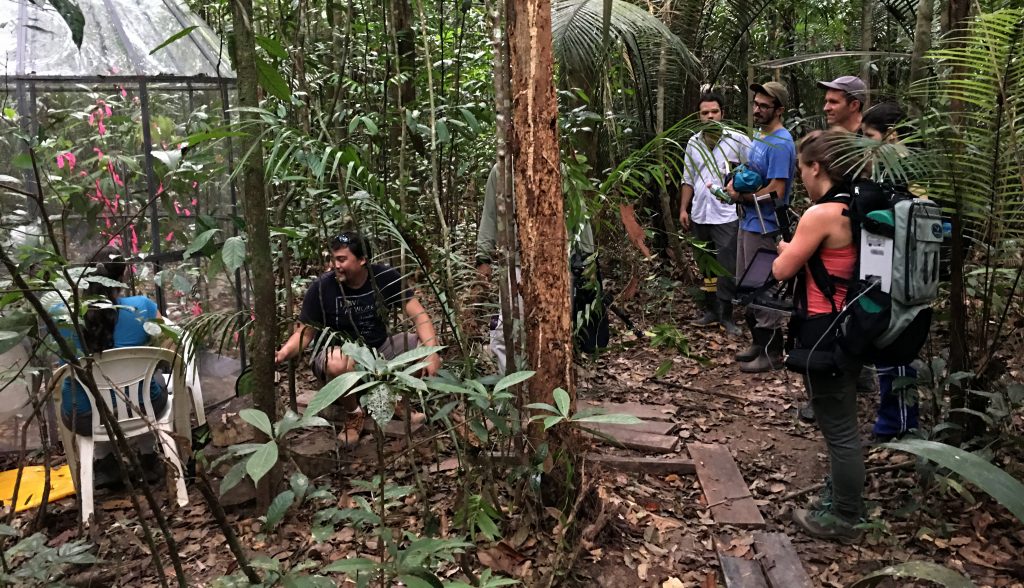
Amazon, the Great Animal Orchestra and Amazon ZF2 24 Hours
The program of the ELS #2 had to be adapted a little bit, but it is no less interesting, because at least two very exciting online versions of our program points already exist. As a replacement for the introductory talk we have chosen the recently broadcast radio show about Marcus Maeder’s work – a large part of the show is about his eco-acoustic work and the AmazonFace project in the Brazilian rainforest. This research program of the Amazonian research institute INPA investigates the effects of climate change on the rainforest. Bernie Krause also carried out eco-acoustic studies not far from the AmazonFace research station near Manaus many years ago and developed his theory of acoustic niches in the rainforest fauna. Here we present his installation and online version of “The Great Animal Orchestra”, that Krause realized together with United Visual Artists for Fondation Cartier pour l’Art Contemporain in Paris. Furthermore, Ken Gubler, Assistant at the Acoustic Ecology Lab of the ZHdK, presents his interactive soundscape of the Amazon Rainforest, which he developed in the course of our research work.
Please click on the blue titles for getting to the individual works.
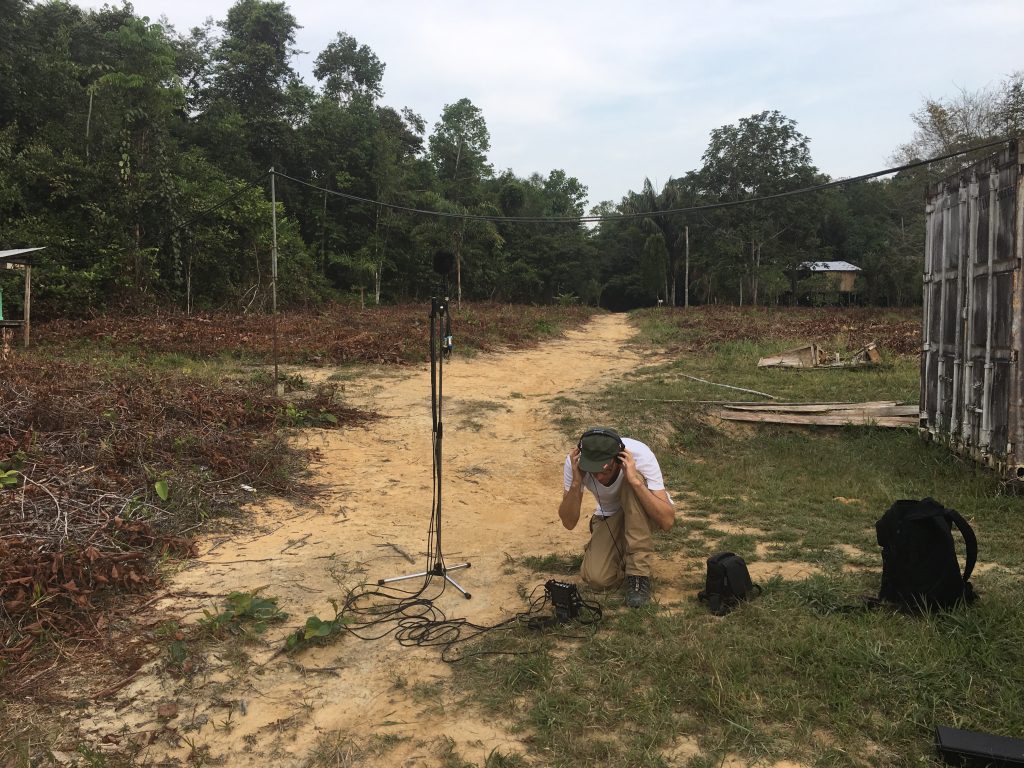
Glaciers are melting, landscapes are drying up, heavy rain is washing everything away – the effects of climatic changes can be seen. But can climate change also be heard?
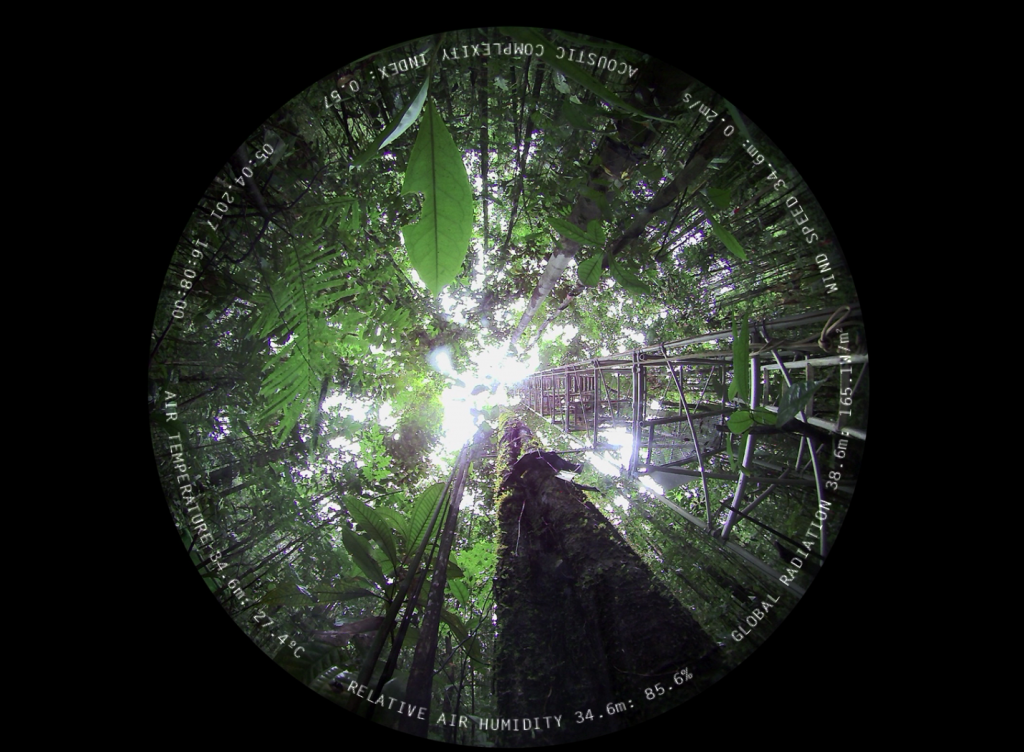
Swiss composer and environmental acoustician Marcus Maeder has been asking himself that question for years. His installations give nature a voice. As early as 2015 his works were invited to the international climate conference COP21 by the then French president Francois Hollande. The sounding drought stress of a mountain pine tree went into the auditory canal and under the skin as a subtly composed soundscape. In the meantime his soundscapes have been set up in Switzerland, Spain, Dresden and Washington. Currently, Maeder is exploring a nature park in Valais and in the remote expanses of the Brazilian rainforest.
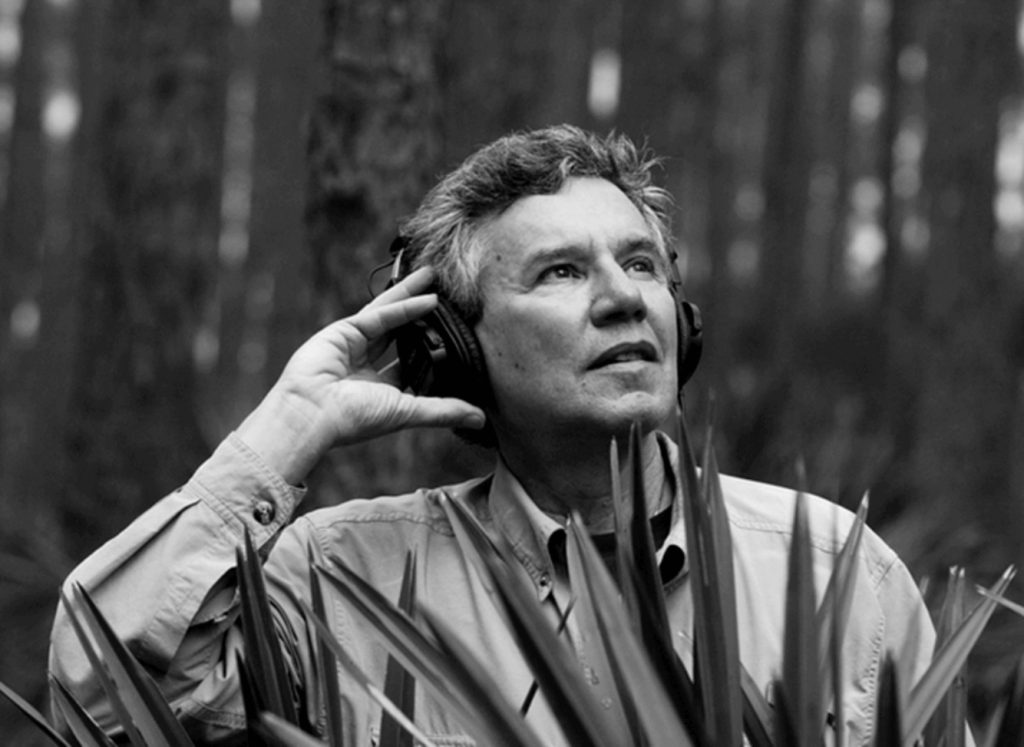
2. Bernie Krause: The Great Animal Orchestra
Over the course of nearly fifty years, Bernie Krause has collected more than 5,000 hours of recordings of natural habitats, including at least 15,000 terrestrial and marine species from all around the world. This trained musician quickly discovered the musical harmony and quasi-orchestral organization of animal vocalizations in the natural world. He is passionate about these natural musical compositions, or “soundscapes,” in which the sounds of the earth, including the sounds of the wind and the rain, also have their place.
Bernie Krause’s approach is unique. Contemplating the natural world as a poet, listening to animal vocalizations as a musician, Bernie Krause also studies it all scientifically. The analysis of the graphic representation of these soundscapes via spectrograms reveals that the sounds of the animal world, often perceived as nonsensical noises, are actually as carefully orchestrated as the most complex musical scores. The study of the acoustic organization of a particular ecosystem shows that at the heart of a soundscape each species spontaneously finds its own “acoustic niche”. Yet the observation of Bernie Krause’s soundscapes also reveals that The great animal orchestra, increasingly threatened by human activities, now risks being reduced to total and utter silence.
London-based studio United Visual Artists (UVA) imagined a visual translation of Bernie Krause’s soundscapes, allowing to listen to sounds and visualize them simultaneously. They designed a three-dimensional electronic installation, which is akin to the detail and complexity of a musical score, transposing the data from the recordings into light particles, thus highlighting the beauty of the sound environments presented. Their audiovisual experience offers an immersive journey through seven territories recorded by Bernie Krause, chosen for their ecological diversity and the richness of their biophony, from Canada to the Central African Republic, from the United States to Zimbabwe, from Brazil to the oceans.
Combining aesthetics and technology, the installation The Great Animal Orchestra simultaneously offers an immersion into the heart of the sounds of nature, and a sound and visual meditation on the necessity of preserving the beauty of the animal world.
The Great Animal Orchestra was created by American musician and bioacoustician Bernie Krause and the English studio United Visual Artists (UVA). It was commissioned by the Fondation Cartier on the occasion of the eponymous exhibition presented in Paris in 2016, and now part of its collection. (Text by Fondation Cartier pour l’Art Contemporain, Paris)
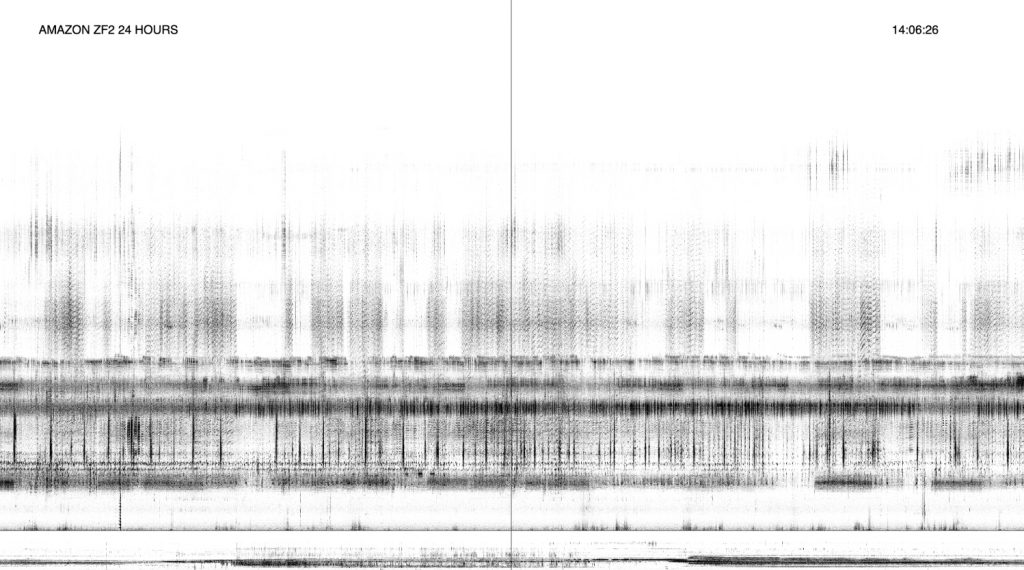
3. Ken Gubler: Amazon ZF2 24 Hours
While working for Marcus Maeder at the ICST, Zurich, I was fortunate to accompany him to Manaus, Brasil, where he is working for the AmazonFace project as an artistic researcher.

We recorded sounds at different locations over a prolonged period of time, mainly to have an acoustic inventory of the present state. Marcus’ work is called Espírito da Floresta / Forest Spirit where he makes the changing CO2 levels audible and combines them with environmental sounds. My artistic contribution is the interactive audio visual installation Amazon ZF2 24 Hours, which uses a 24 hour long audio recording. The aim of such art is to raise awareness of environmental issues with other means than science alone could accomplish.
We are very happy about your comments and discussion: